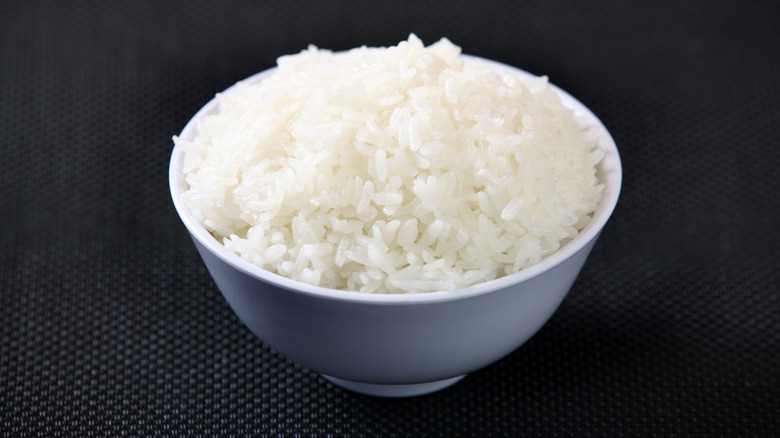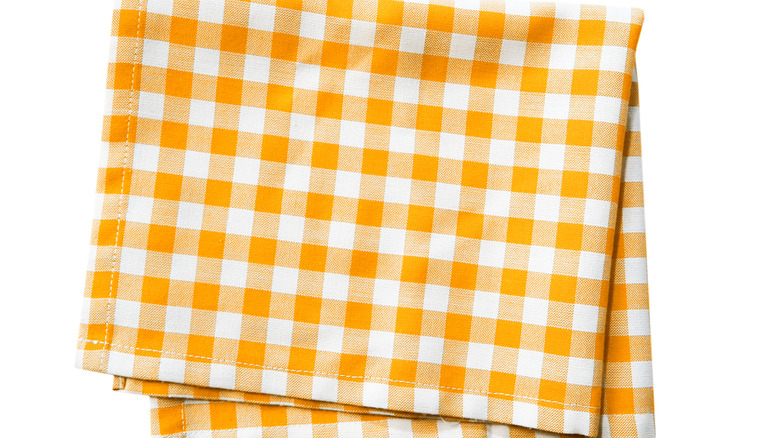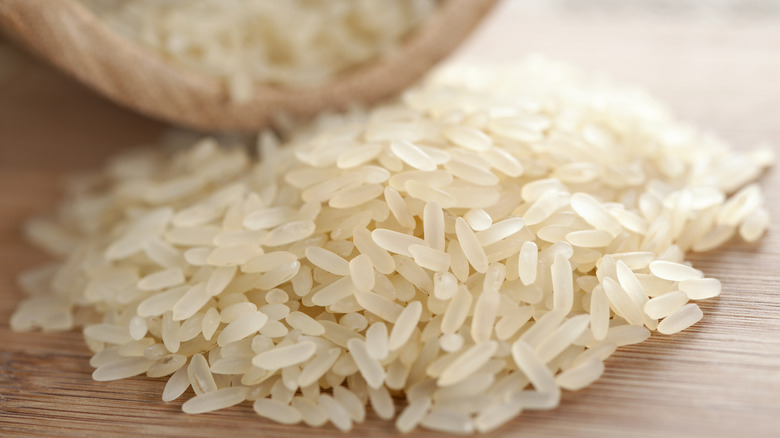The Kitchen Towel Hack For Perfectly Fluffy Rice
For such a simple and essential ingredient, rice isn't always the easiest thing to make. Unless you're blessed with a rice cooker, making the perfect pot of fluffy rice on the stovetop can take a lot of trial and error. Internet advice abounds, but some tips are more reliable than others. Here's one for keeps: If you consistently wind up with slightly gummy and overcooked rice despite following every rule in the book, consider adding one extra step to the process — a dish towel.
In the period between taking your rice off of the stove and serving, all that steam — the droplets of water suspended in the air — that cooked your rice can turn on you. As your rice sits, the steam can settle on the underside of the lid and drip down into the grains, causing them to clump together. A dish towel can serve as a shield against that excess moisture.
The perfect moisture barrier
The next time you make rice, try placing a dish towel on the underside of the lid until you're ready to serve. The fabric will trap the moisture and prevent the rice from getting overcooked, leaving you with fluffy, individuated grains. If you want even more insurance, you can tie a towel to the lid of your pot while your rice simmers. Just make sure to fasten the towel securely atop the lid, lest it unfurl and dip into the flame of your burner.
According to a Reddit thread, using a towel during the cooking process not only wicks away unwanted moisture but also helps to give your lid an even tighter seal, which is necessary for evenly cooked rice. "The towel is both to help provide a tighter seal on the lid and to prevent the condensation that forms on the underside of the lid from dripping down onto the rice," confirmed one user.
More pro tips
While we're on the subject of perfection, there are a few additional ways to make super fluffy rice on the stove.
First and foremost, it's important to rinse your rice before you start cooking. No matter how clean it looks in its package, there's a lot of excess starch that coats the outside of raw grains. Extra starch is great when you want to make a creamy, emulsified pasta sauce, but when it comes to rice, extra starch can act as an unappetizing glue. As a general rule, you want to rinse your grains until the water runs as clear as possible — three rounds is usually enough.
As a final step, it's also hugely beneficial to fluff your rice with a fork right before plating up. This one's pretty obvious — it helps the grains break free from whatever clump they might be clinging to, letting you see each individual piece.


